SKU:
Callaham Guitars
Callaham Telecaster Bridge, Vintage, Enhanced Vintage Compensated Stainless Saddles
Callaham Telecaster Bridge, Vintage, Enhanced Vintage Compensated Stainless Saddles
Couldn't load pickup availability
When the Telecaster (Broadcaster) was first designed and built in 1950, the bridge system was crude at best. It served the purpose of positioning the strings, but allowed for only coarse intonation adjustment. Callaham's bridge maintains the traditional look, while using superior materials and design that deliver a wider frequency response, increased sustain, and perfect intonation.
FENDER BRIDGE - SHORTCOMINGS
The current production Fender bridge is made from .045" - .050" 1010 hot-rolled steel in a deep-drawn process. This bridge is used on all reissues and Custom Shop models. The steel used must be very soft - and limited in thickness - to allow it to fold and bend in the corners. The process also creates tremendous internal stress that bows the plate such that it doesn't sit flat; consequently it's not in full contact with the body surface, which can cause unwanted feedback in some guitars. Aesthetically, the plate shows unattractive scratches from the die, which was of no concern when it was designed since it was originally intended to be covered. Finally, the saddles cannot be adjusted for perfect intonation, and their set screws interfere with the strings by being in the strings' paths.
CALLAHAM PLATE IMPROVEMENTS
Callaham's bridge is made from .075" cold-rolled carbon steel using a five-stage bending process, and then stress-relieved so that the plate will sit absolutely flat, providing maximum sustain and vibration transfer. Stiffness and flatness are paramount in this design, and would not be obtained using .050" material and stamping processes. There is no chance of unwanted feedback with this bridge, and Callaham has chosen cold-rolled carbon steel for tonal reasons.
Hot-rolled steel as used in the Fender bridge is soft, and also contains pits and voids that require heavy chrome plating (chromed plates first have to be copper-plated to fill the voids, followed by nickel and then chrome, to obtain an acceptable-looking part that hides the material flaws). Using stainless steel would eliminate the need for plating - it would require only buffing - but the sound is too bright and thin, making it unacceptable. The cold-rolled material as used by Callaham is extremely uniform and allows for direct buffing. Callaham applies a nickel plating directly to the steel strictly as a rust preventative. The result is a warm finish, which works beautifully for those building a repro guitar.
Making the guitar easy to play is also important. The sides of Callaham's bridge are lowered to allow for easy palm muting (Leo Fender wasn't a guitar player, and one of his most glaring design flaws - on both the Tele and Strat - was designing bridges with covers that prevent palm muting). The front lip of the treble side is removed entirely to allow access for finger picking - a trick done for years by great Tele players. The two small screw holes on the front corners of the plate may be used at the player's discretion. Because of the rigidity of the plate, using the screws will provide only a modest increase in sustain (they would make a more noticeable difference on less rigid bridges). Screws are included with the bridge for those wanting the maximum available sustain.
CALLAHAM SADDLE IMPROVEMENTS
It is extremely important that an instrument intonate correctly, and Callaham guarantees this with their saddles. It's equally important that the strings don't touch the height adjustment screws, which can be a problem on Fender bridges and their copies. Callaham ensures that this won't be a problem with their saddles by using smaller-diameter set screws, and moving them out closer to the ends of the saddles. Additionally, they are the only manufacturer that buffs every saddle, by hand, to a high luster. This allows the string to rest on a perfectly smooth surface. They also install height-adjustment screws of the correct length, preventing the screws from protruding up above the saddles and causing discomfort to the picking hand.
Callaham's saddles are available in either brass or stainless steel. The brass has a warmer tone and the steel has more punch and sustain. Two methods of compensation (intonation adjustment) are available: original "slant" compensation, or "enhanced vintage" compensation. The enhanced vintage saddles were introduced for those who want to maintain a complete vintage look and have perfect intonation. They offer the same benefits of Callaham's original slant-compensated saddles, but with the 90˚ (right-angle) look of original '50s saddles.
A problem with some saddles that are currently available is that they touch each other firmly. Some manufacturers state this as having been an intended design consideration, but their logic is flawed, since this design has the consequence of allowing sympathetic vibrations from one string to influence the vibrations of another string, causing dissonant overtones that can drive players crazy (especially at high volume). It's this type of vibration that occurs on acoustic guitars, with their single saddle, and that can contribute to beating tones when certain chords are played, and phasing problems on other chords. Callaham purposely avoids firm contact between their saddles for this reason.
FITS STANDARD TELECASTER!
The Standard Telecaster (Mexico) uses a cheapy 6-saddle bridge that is the size and shape of the American Standard bridge. But it uses the vintage American 4-screw mounting - with string holes behind the mounting screws - whereas the American Standard Tele bridge uses a 3-screw mounting, with the string holes in front of the mounting screws).
If you want to replace the bridge on a Standard Tele (Mexican), then you need Callaham's vintage bridge, not their American Standard bridge. Note that the vintage bridge will not completely cover the area on the face of the guitar that was originally covered by the Mexican bridge, which is about 1/2" longer than the vintage bridge (see the image above). We have first-hand experience with this replacement, as we at Tone Shapers have made this change to literally dozens of Standard Teles, and our experience is that the area of the top that is revealed by the bridge change is seldom more than slightly imprinted by the original bridge, and sometimes not at all, so there is usually only the most mildly-discernible visual consequence from making this change. But the bridge screws right on: The screw holes and the six string holes line right up and the guitar intonates perfectly. Very nice upgrade!
- Country of Manufacture: USA
- String spacing: 2-1/8" (2.125" / 54mm)
- Saddles: enhanced vintage compensated stainless steel
- Fits: Vintage Teles, Vintage Reissues, Standard Tele
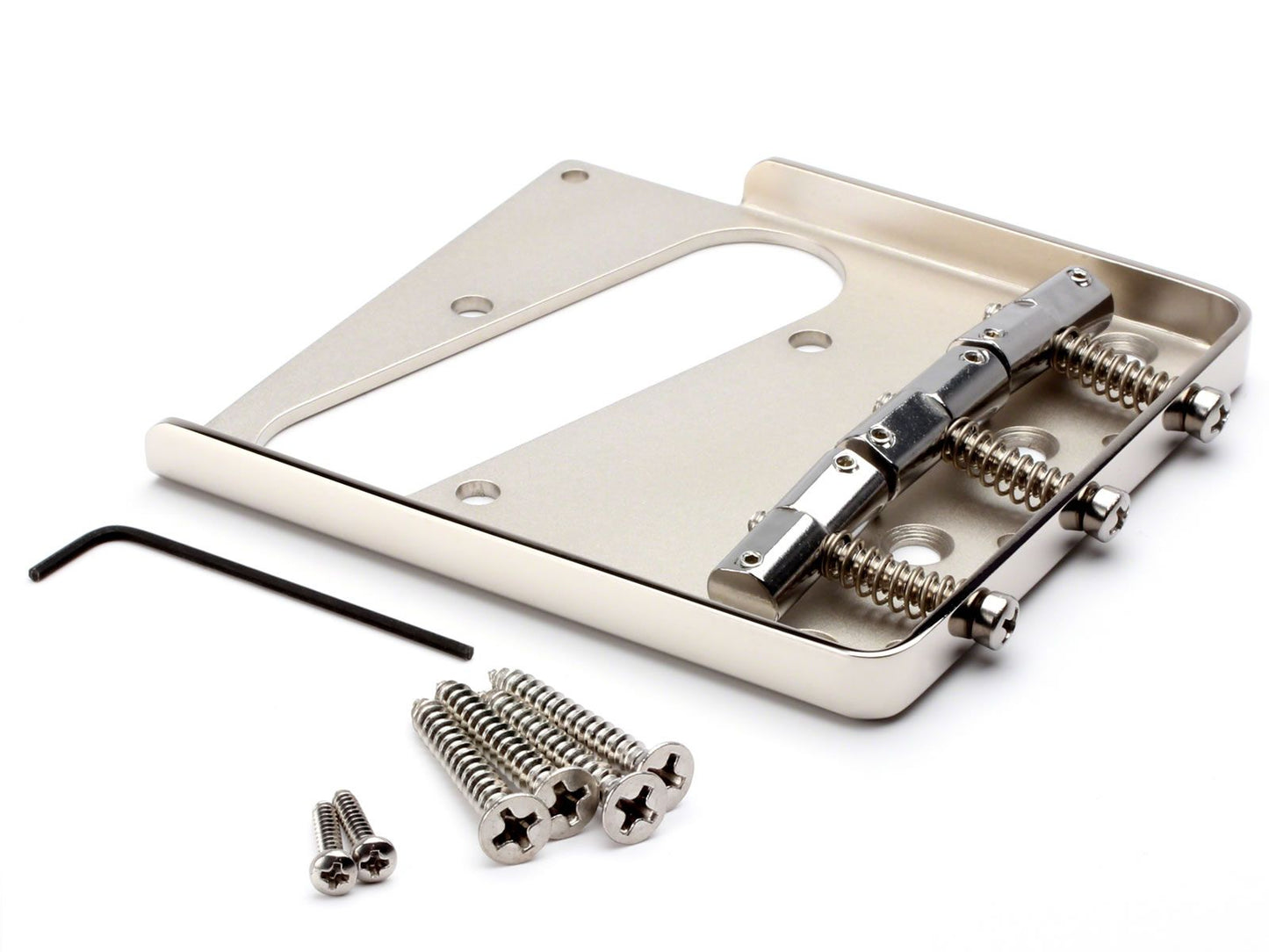
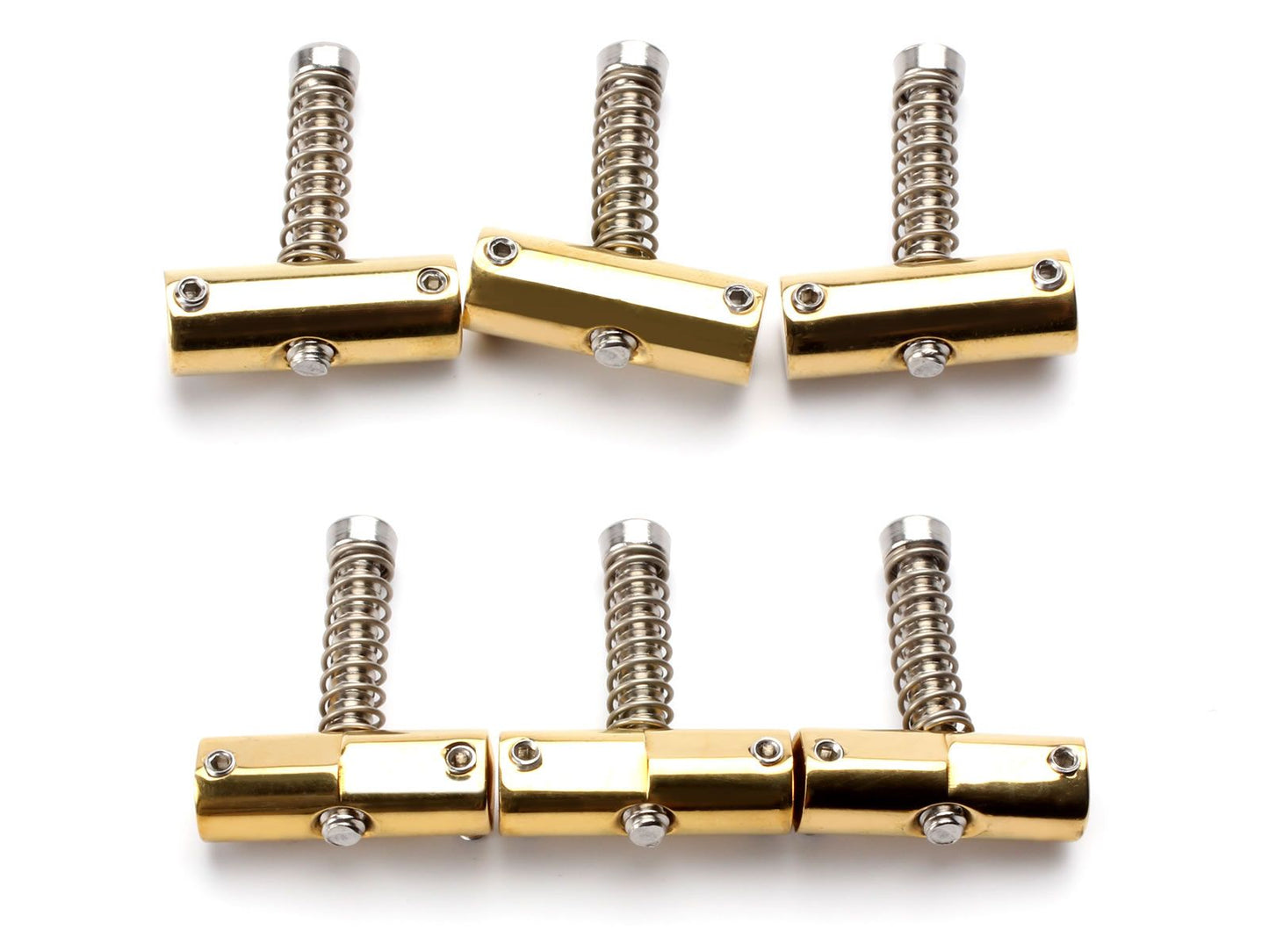
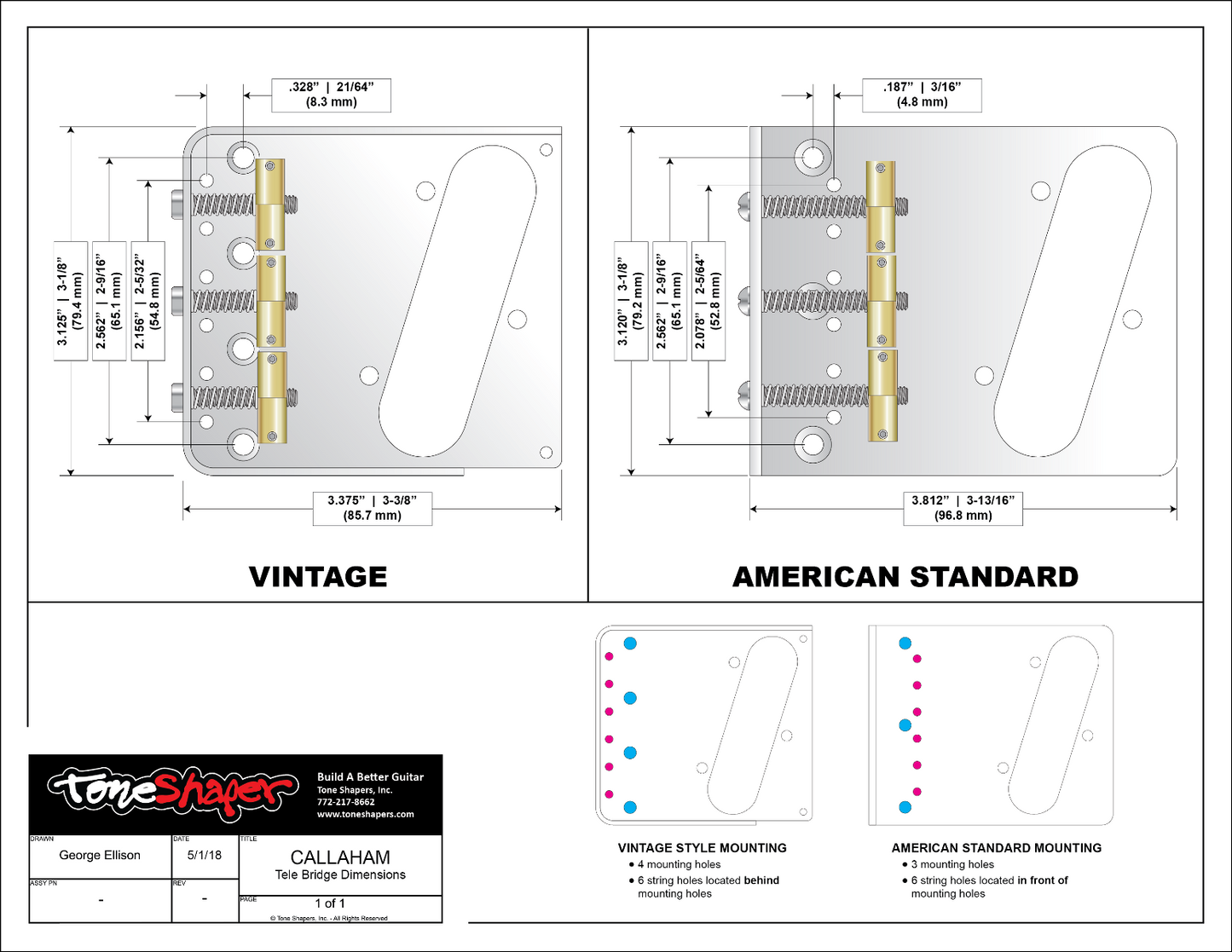
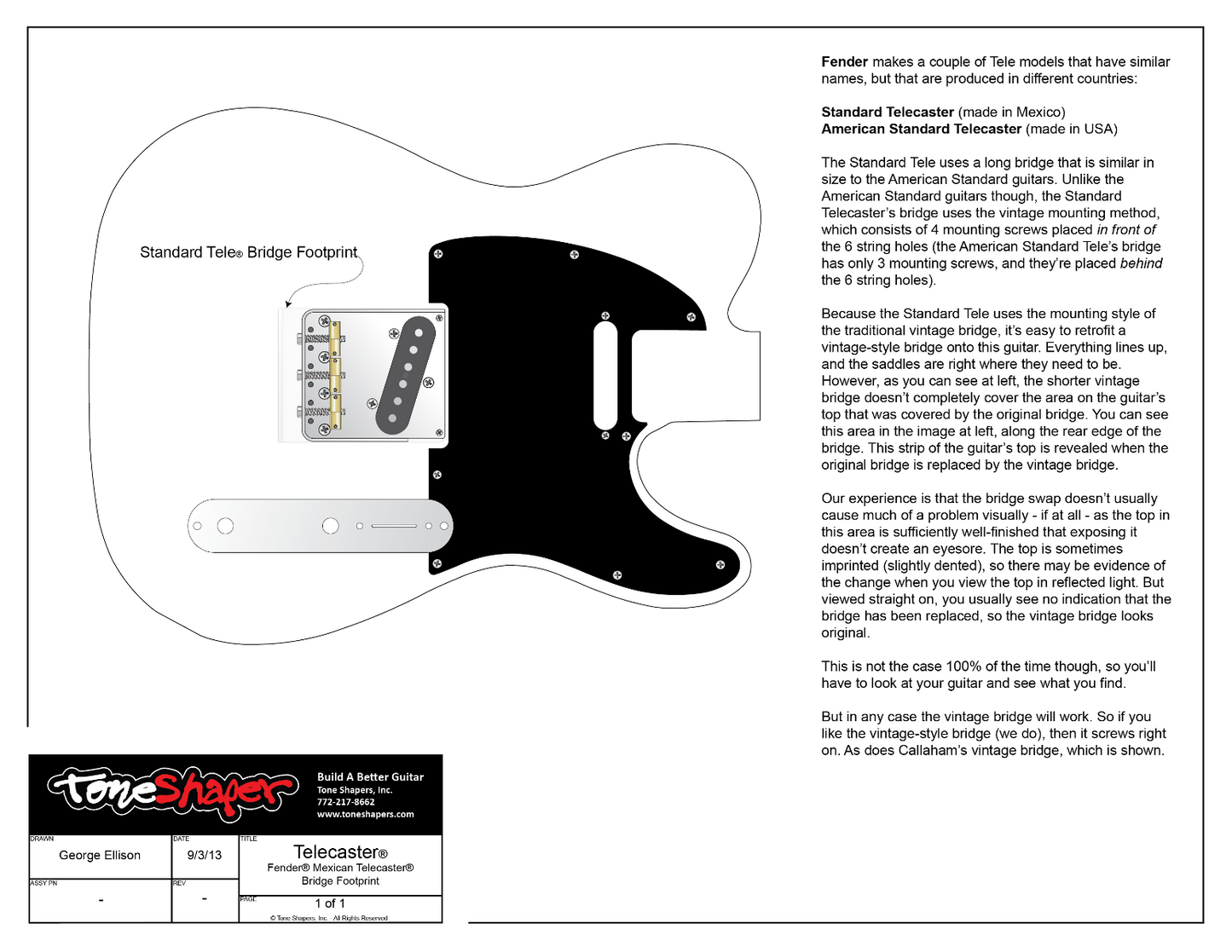
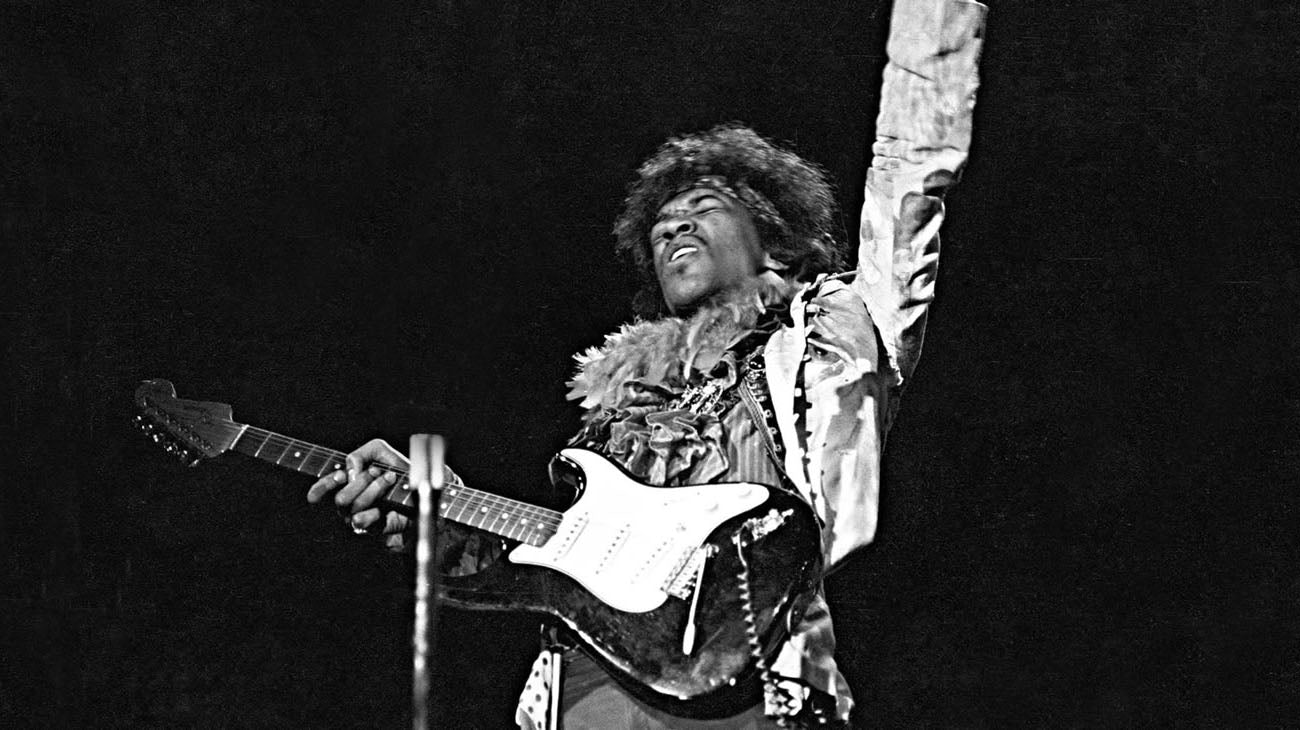
maestro
these are the players who inspire us




